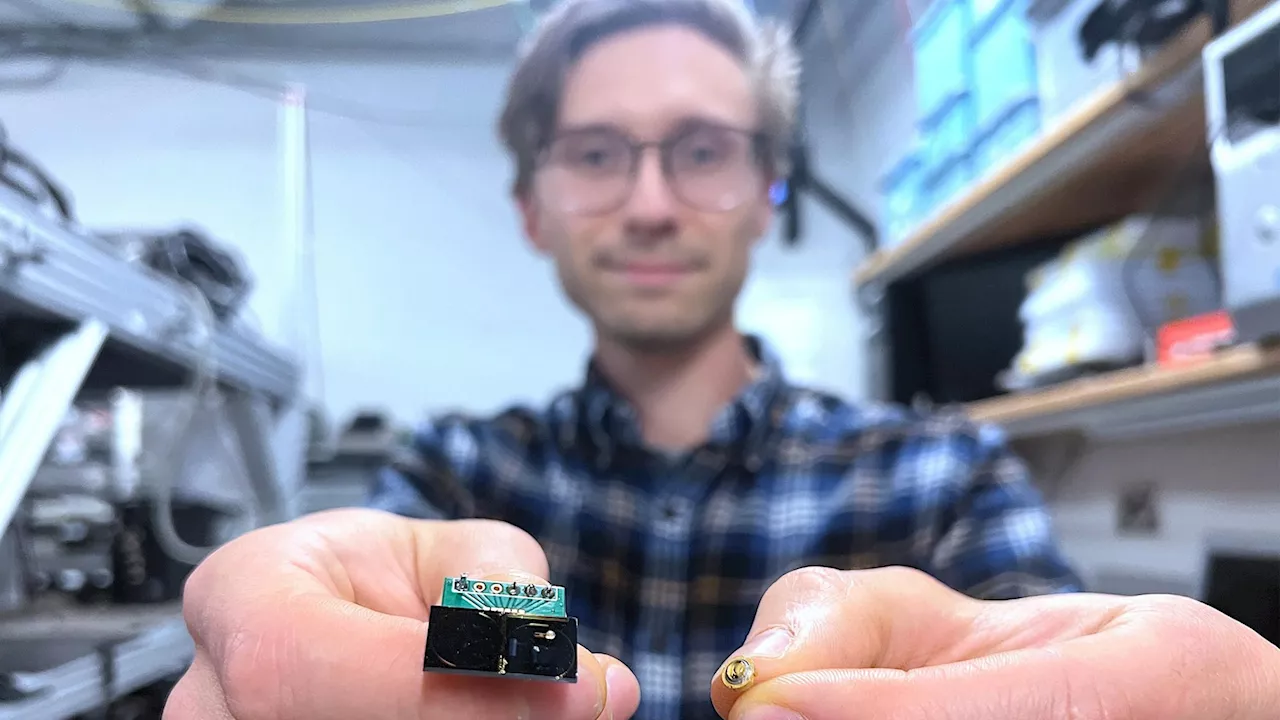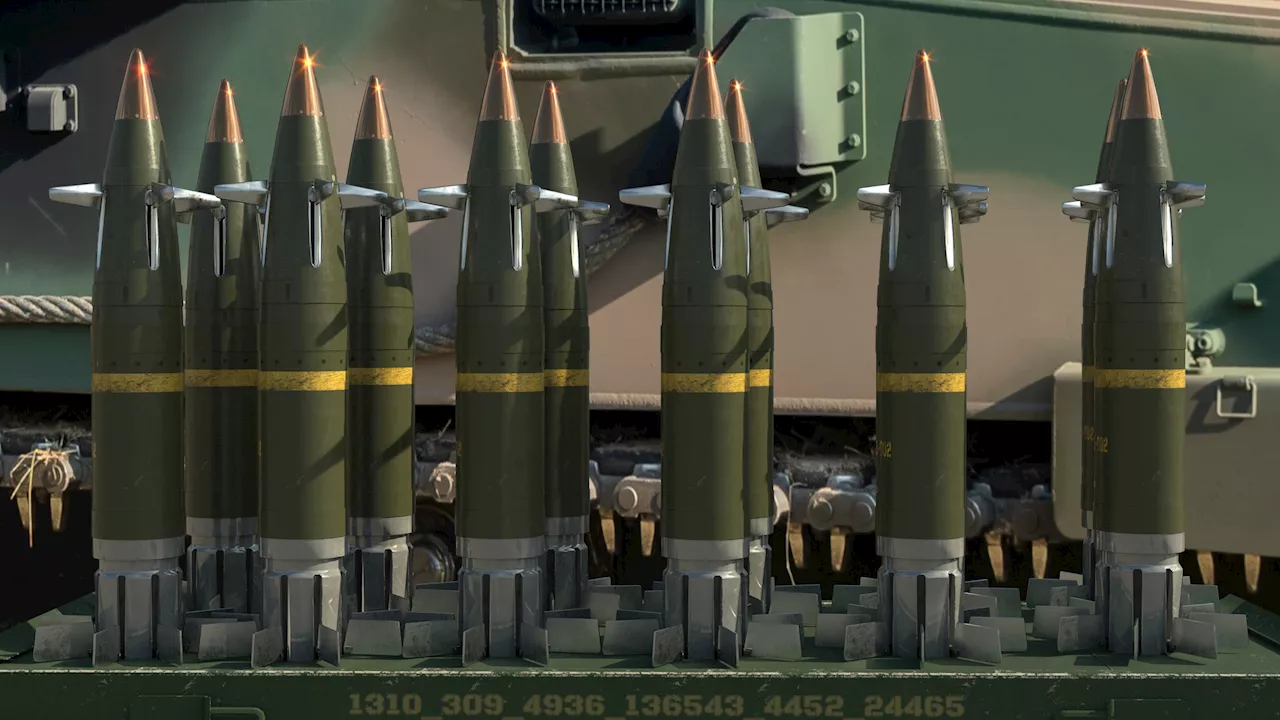U.S. Army researchers have made a breakthrough in energy storage technology by developing a novel surface treatment technique that significantly enhances the performance and longevity of rechargeable zinc batteries. This innovation, originating from the Army Research Laboratory (DEVCOM ARL), utilizes an acidic solution to create an ultra-thin protective layer on the battery's electrodes, leading to improved power output and extended lifespan. This advancement paves the way for more reliable power sources for military equipment and has the potential to revolutionize various civilian applications.
In a significant advancement for energy storage technology, U.S. Army scientists have unveiled a novel surface treatment technique that promises to enhance the efficiency and longevity of batteries for military use.This groundbreaking work has emerged from the U.S. Army Combat Capabilities Development Command Army Research Laboratory (DEVCOM ARL), which specializes in pioneering research to improve technology for soldiers in the field.The research team, led by Dr.
Travis Pollard, has developed a quick, commercially viable treatment process that modifies multivalent metal electrodes by applying an acidic solution.This innovative approach generates an ultra-thin protective layer, improving the performance of rechargeable zinc batteries.Dr. Pollard explained, “This unique interphase layer is thinner than a human hair, yet it significantly enhances rechargeable zinc battery performance. For our soldiers, this could mean more reliable power sources for their critical equipment.”\This new battery technology marks a pivotal step beyond traditional lithium-ion solutions, expanding the potential for various applications.The research team’s method involves first treating the metal electrode’s surface with a specific acidic solution, followed by a controlled drying phase that creates a specialized, thin protective layer on the electrode.The team consists of esteemed scientists, including Drs. Lin Ma, Marshall A. Schroeder, Oleg A. Borodin, Travis P. Pollard, and Kang Xu contributed their expertise to this promising project.The implications of this technology are vast, with potential applications ranging from military energy storage to civilian uses such as portable electronics, electric vehicles, and grid-scale energy storage solutions.Military energy storage systems, in particular, could benefit from longer-lasting batteries, significantly improving operational readiness and sustainment.AnnMarie Martin, the Technology Transfer team lead at DEVCOM ARL, emphasized the importance of translating research breakthroughs into real-world applications.“We don’t just conduct research for the sake of knowledge; our goal is to ensure that our breakthroughs have the widest possible impact,” she stated.The technology is expected to be licensed soon through the Army’s technology transfer program, which aims to foster collaborative partnerships with industry—ranging from large corporations to startups—to help bring these innovations to market.Martin highlighted the potential reach of the new battery technology, noting, “This could revolutionize everything from military devices to electric cars.” By leveraging taxpayer investments into practical developments, the Army aims to maximize the benefits of its research initiatives. \Thinner than a human hairThe U.S. Patent and Trademark Office has also recognized the significance of this innovation, having published the patent application on November 21, 2024, following a filing from the research team in May of that year.The new technology could enhance the performance of various multivalent metal electrodes.The treatment involves applying an acidic solution to the electrode’s surface and careful drying to create an outer interphase layer of hydrated hydrochloride containing the multivalent metal with a thickness of fewer than 5 micrometers.DEVCOM ARL operates as a vital research entity within the Army, aiming to operationalize scientific discoveries to meet evolving military needs.The laboratory is strategically nested within DEVCOM and the Army Futures Command, allowing it to focus on transformative research and developing emerging technologies that continuously enhance Army capabilities.As this research unfolds, the promise of this advanced battery technology indicates a shift in military energy solutions.It opens the door for significant advancements in various commercial sectors, reflecting a broader commitment to innovation that benefits soldiers and civilians alike
BATTERY TECHNOLOGY ENERGY STORAGE MILITARY INNOVATION ZINC BATTERIES SURFACE TREATMENT
United States Latest News, United States Headlines
Similar News:You can also read news stories similar to this one that we have collected from other news sources.
 Scientists Develop Groundbreaking Device for Water Desalination Using Solar Power and Recycled TiresA new invention from Dalhousie University could provide a sustainable solution to global water scarcity.
Scientists Develop Groundbreaking Device for Water Desalination Using Solar Power and Recycled TiresA new invention from Dalhousie University could provide a sustainable solution to global water scarcity.
Read more »
 Scientists develop 3D concrete printing method that captures carbon dioxideScientists have developed a 3D concrete printing method that captures carbon, demonstrating a new pathway to reduce the environmental impact of the construction industry.
Scientists develop 3D concrete printing method that captures carbon dioxideScientists have developed a 3D concrete printing method that captures carbon, demonstrating a new pathway to reduce the environmental impact of the construction industry.
Read more »
 Scientists develop matchbox-sized laser in a bid to boost quantum researchA tiny chip-powered device has the power to replace the bulky lasers scientists use to study quantum applications and atomic clocks.
Scientists develop matchbox-sized laser in a bid to boost quantum researchA tiny chip-powered device has the power to replace the bulky lasers scientists use to study quantum applications and atomic clocks.
Read more »
 South Korean Scientists Develop a Wearable Robot to Help Paraplegic Users WalkResearchers at the Korea Advanced Institute of Science and Technology (KAIST) have created a lightweight, wearable robot that can assist paraplegic individuals in walking, maneuvering obstacles, and climbing stairs. The robot, which can lock onto the user, aims to seamlessly integrate into their daily lives.
South Korean Scientists Develop a Wearable Robot to Help Paraplegic Users WalkResearchers at the Korea Advanced Institute of Science and Technology (KAIST) have created a lightweight, wearable robot that can assist paraplegic individuals in walking, maneuvering obstacles, and climbing stairs. The robot, which can lock onto the user, aims to seamlessly integrate into their daily lives.
Read more »
 Scientists Develop Precise Method to Study Plasmonic WavesA new study combines time-resolved electron microscopy and multi-polarization lasers to create a highly accurate method for analyzing plasmonic waves, offering insights into their behavior and potential applications.
Scientists Develop Precise Method to Study Plasmonic WavesA new study combines time-resolved electron microscopy and multi-polarization lasers to create a highly accurate method for analyzing plasmonic waves, offering insights into their behavior and potential applications.
Read more »
 BAE Systems to Develop US Army's Hypersonic Artillery SystemThe US Army has awarded BAE Systems a sole-source contract to develop a prototype of a new 155 mm anti-aircraft artillery system called the Multi-Domain Artillery Cannon (MDAC). The system will be equipped with hypersonic projectiles and designed to defend against drones, cruise missiles, aircraft, and helicopters. The prototype is expected to be delivered by the fourth quarter of 2027, followed by an operational demonstration in 2028.
BAE Systems to Develop US Army's Hypersonic Artillery SystemThe US Army has awarded BAE Systems a sole-source contract to develop a prototype of a new 155 mm anti-aircraft artillery system called the Multi-Domain Artillery Cannon (MDAC). The system will be equipped with hypersonic projectiles and designed to defend against drones, cruise missiles, aircraft, and helicopters. The prototype is expected to be delivered by the fourth quarter of 2027, followed by an operational demonstration in 2028.
Read more »
